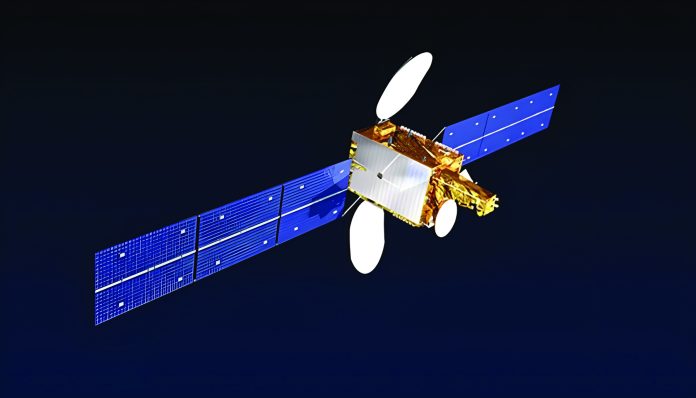Syed Samiullah
A satellite, or artificial satellite, is a man-made object designed to orbit a larger celestial body, like the Earth or another planet. Essentially, it is like a tool or machine that we send into space to serve specific purposes. Satellites are used for many practical and important tasks in our daily lives, such as helping us communicate over long distances (like phone calls or internet connections), forecasting the weather, guiding us with GPS navigation, and broadcasting television and radio signals.
They also play a key role in scientific research, helping scientists study Earth and space, and in keeping an eye on our planet for things like climate monitoring. Additionally, satellites are used for military purposes, such as gathering intelligence, providing early warnings of threats, and in some cases, carrying weapons.
Every major country invests in developing and launching satellites to serve a variety of purposes, such as communication, research, navigation, and monitoring. Pakistan, too, has made remarkable progress in this field, demonstrating its capabilities through a solid record of successful satellite launches. One of Pakistan’s notable achievements is the launch of Paksat-MM1, a multi-mission satellite. Here, we take a closer look at this important milestone in Pakistan’s space program.
PAKSAT-MM1, or Paksat Multi-Mission-1, represents a significant step forward in Pakistan’s journey into space and communication technology. This satellite was developed through collaboration between SUPARCO (Pakistan’s Space and Upper Atmosphere Research Commission) and CASC (China Aerospace Science and Technology Corporation). Its primary goal is to improve communication networks in Pakistan and support the country’s shift towards a more digital future. In line with these advancements, Pakistan has improved its ranking by 14 points in the United Nations E-Governance Development Index, moving from 150 in 2022 to 136 this year. Before its launch, it was known as PakSAT-MM 1R, but during the launch, it was officially named PakSAT-MM 1.
PAKSAT MM1
PAKSAT-MM1 is an integral part of Pakistan’s National Space Program 2047, which envisions launching a series of satellites for communication, remote sensing, and weather forecasting. This ambitious program is designed to strengthen Pakistan’s technological infrastructure and ensure self-reliance in space-based services.
A key feature of this program is international collaboration, which has proven instrumental in advancing Pakistan’s space capabilities. For example, Pakistan partnered with China on the development and launch of satellites such as PRSS-1 (a remote sensing satellite) and PakTES-1A (a technology evaluation satellite). These collaborations have not only resulted in successful missions but have also facilitated valuable knowledge and technology transfer, empowering Pakistani space scientists and engineers with the expertise needed for future advancements in the field.
Development and launch
On May 30, 2024, at 12:12 UTC, Pakistan’s PAKSAT-MM1 satellite was successfully launched from China’s Xichang Satellite Launch Centre using a Long March 3B rocket. This mission was part of China’s renowned Long March rocket series, marking the 96th flight of the Long March 3B model and the 524th mission overall.
The launch was attended by Pakistan’s Planning Minister, Ahsan Iqbal, who expressed optimism about the future of Pakistan’s space program, saying, “The day is not far when we will launch our satellites on our own rockets from Pakistan’s Space Launch Centre.
Congratulations Pakistan.” Prime Minister Shehbaz Sharif also extended his congratulations, highlighting the satellite’s potential to improve internet connectivity across the country. He stated, “I am particularly excited about the potential impact of PAKSAT MM1 on internet connectivity across Pakistan. With its state-of-the-art communication technology, this satellite promises to revolutionize our digital landscape and provide the fastest internet facility throughout the country.”
China launches PAKSAT MM1 satellite
Once in its designated orbit, PAKSAT-MM1 underwent thorough in-orbit testing to confirm that all its systems were functioning correctly. By September 18, 2024, the Minister of State for Information Technology and Telecommunication, Shaza Fatima Khawaja, announced that the satellite had successfully passed all tests and was fully operational. It is now ready to deliver advanced communication services, marking a significant milestone in Pakistan’s journey toward technological self-reliance and improved digital infrastructure.
Key features of PAKSAT-MM1
The satellite is equipped with impressive technical features:
- Platform: Based on the DFH-4E satellite bus, known for its reliability and adaptability.
- Weight: It has a launch mass of approximately 5,400 kilograms.
- Transponders: The satellite includes 48 transponders spread across C, Ku, Ka, and L frequency bands, enabling diverse communication applications.
- Antennas: It is outfitted with nine antennas to support its operations.
- Lifespan: Designed for a service life of 15 years.
- Orbital Position: Positioned at 38.2° East in geostationary orbit.
- Coverage Area: The satellite provides coverage over mainland Pakistan, nearby regions, parts of the Indian Ocean, the Middle East, East Africa, and even portions of Europe.
Capabilities and services
PAKSAT-MM1 plays a vital role in advancing Pakistan’s socio-economic development by offering a range of modern services designed to improve connectivity and bridge the digital divide. Its capabilities are structured to serve various sectors efficiently and effectively:
- It features high-power transponders in the C and Ku frequency bands, enabling reliable television broadcasting, including High-Definition TV (HDTV). It provides extensive regional coverage and ensures direct access to premium cable and direct-to-home (DTH) platforms, even in areas like the UK and mainland Europe.
- With its advanced Ka-band transponders, the satellite delivers high-speed broadband services across Pakistan. It has a total capacity of 10 Gbps, which is distributed through fixed beams capable of delivering up to 1 Gbps each. This ensures better internet connectivity, especially in remote and underserved areas, supporting the goal of widespread digital inclusion.
- Paksat-MM1 also includes an L-band Satellite-Based Augmentation System (SBAS), which boosts the accuracy of satellite navigation systems. This feature is particularly useful for sectors like aviation, maritime, and others requiring precise positioning.
Strategic importance
PAKSAT-MM1 contributes to several key areas: Firstly, it will improve the country’s communication network. This means better broadcasting, faster internet services, and support for online education programs, making information and learning more accessible to everyone.
Secondly, it will help bring the internet to rural and remote areas, ensuring that people in these regions can connect to the digital world. This effort supports the government’s goal of creating a “Digital Pakistan,” narrowing the gap between urban and rural communities in terms of technology access.
Thirdly, the satellite will serve as a backbone for the growth of Pakistan’s information technology sector. By providing a solid communication infrastructure, it will help businesses and industries thrive, contributing to economic progress and creating new opportunities for people. Lastly, Paksat-MM1 will also enhance national security by providing secure communication channels for government and defense use. This adds a layer of safety and reliability to the country’s security systems.
Conclusion
PAKSAT-MM1 is a cornerstone of Pakistan’s technological advancement, offering essential communication services that foster national development, enhance digital connectivity, and strengthen strategic capabilities. By leveraging its capabilities, Pakistan is poised to achieve significant progress in digital inclusion, economic growth, and security infrastructure.







